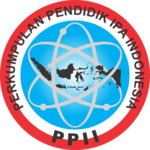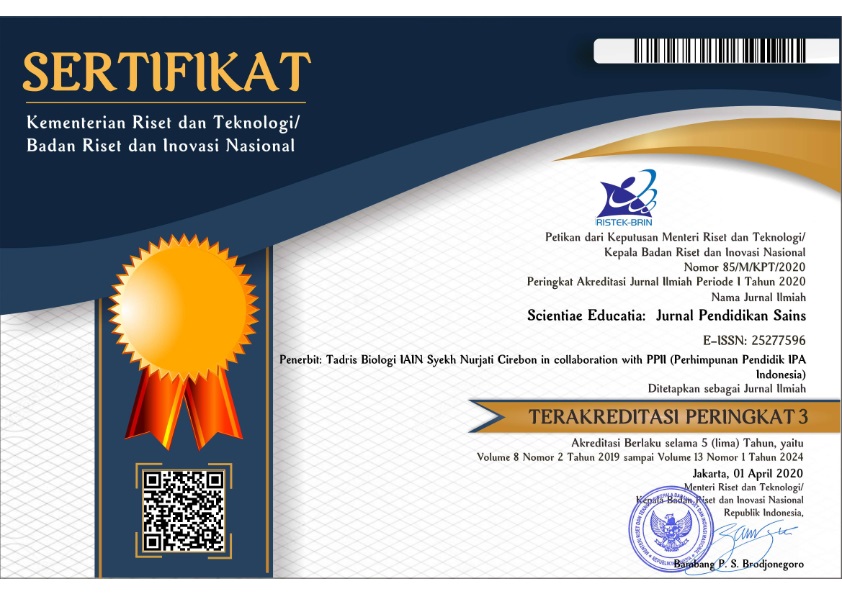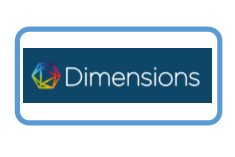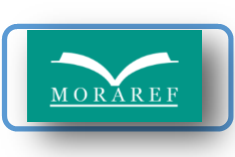Differences in Students' Thinking Skills in Making Decisions Through Online Learning Based on Google Classroom Applications on Ecosystem Materials
(1) Department of Biology Education, Faculty of Education and Teacher Training, IAIN Syekh Nurjati Cirebon
(2) Department of Biology Education, Faculty of Education and Teacher Training, IAIN Syekh Nurjati Cirebon
(*) Corresponding Author
Abstract
Keywords
Full Text:
PDFReferences
Agung, P., Zubaidah, S., & Mahanal, S. (2013). Differences in Thinking Ability and Biology Learning Outcomes of Class X Sma Negeri 7 Malang Based on Gender With the Application of Jigsaw Strategy. Journal of Biological Education 1(1)
Alika, et al. (2017). Urbanites edition 4 - the decision-making process for choosing a university and study program: A case study on students of the faculty of technology and design (FTD). Jaya Development University Printing.
Aminuddin, L. (2016). Gender Concepts and Issues In Islam. Journal of Ihya Al-Arabiyah, 2(1).
Andi, T. (2014). Differences in Coping Mechanisms between Male and Female Students in Facing Semester Exams at the Tarbiyah Faculty of IAIN Raden Intan Lampung. Journal of Guidance and Counseling 1(1)
Andini et al. (2019). Application of google classroom application-based blended learning to improve the cognitive ability of class X students on ecosystem materials at SMAN 1 Ciwaringin. Indonesian Journal of Natural Sciences, 2(2), 85 – 98.
Arbain, J. (2015). Gender Thinking According to Experts: A Study of the Thoughts of Amina Wadud Muhsin, Asghar Ali Engineer, and Mansour Fakih. Sawwa Journal, 11(1).
Arifin & Benjamin. (2020). Effectiveness of Online Learning Media Through Google Classroom. Journal of Islamic Education, 11(2).
Ariyana, Y., Bestary, R., Yogyakarta, U. N., & Mohandas, R. (2018). Learning Handbook Oriented on Higher Order Thinking Skills. Directorate General of Teachers and Education Personnel: KEMENDIKBUD.
Awalludin. (2018). The Effectiveness of Decision-Making Models in Learning to Write Persuasive Paragraphs for Class X Smk Trisakti Baturaja. Journal of Bindo Sastra, 2(1), 159–167.
Aziz. (2008) Why Women Are More Creative Than Men?. Journal of UIN Malang, 1(1).
Brizendine, L. (2010). Female Brain. Phoenix Publishing Project
Desmita. (2012). Developmental Psychology of Students. PT Teen Rosdakarya
Handarini, O. I., & Wulandari S. S. (2018). Online to draw causal claims from non-randomized studies of primary care interventions. Journal of Office Administration Education (JPAP). 35(5), 639–643.
Herson, A. (2014). The decision-making process for developing the quality of madrasah Herson Anwar. Journal of Islamic Education, 8(1).
Juono. (2015). Gender Equality in Islamic Education. Journal of Islamic Studies. 15(1).
Khairunnisa, R., & Setyaningsih, N. (2017). Metacognition Analysis of Students in Social Arithmetic Problem Solving in terms of Gender Differences. Proceedings of the Second National Conference on Mathematics Research and Learning (KNPMP II) Universitas Muhammadiyah Surakarta, 18 March 2017
Kris, T. (2018). Brain & behavior. ANDI Publisher
Mahrita, H. J. (2019). The Use of Google Classroom Applications in Mathematics Learning Think Pair Share Type at Smkn 3 Banjarmasin. Proceedings of SenpikaII, FKIP Mathematics Education Study Program, Lambung Mangkurat University, Banjarmasin, 12 October 2019.
Mandella, S. et al. (2021) Early Scientific Reasoning Ability of High School Students based on Gender in Ecosystem Materials. Journal of UNJA, 7(2).
Maulidya, A. (2018). Thinking and problem-solving. Journal of Arabic Language and Literature Education 4(1)
Mindra, P. (2020). Corona Chart July 13: New Cases Drop, Patients Recovered Soared. [Online] Accessed from the news.detik.com website on July 13, 2020.
Netty, K. (2015). Sex Roles, Gender and Occupational Bias. Pamator Journal, 8(2).
Novianti, M. (2020) Differences in Student Learning Outcomes Based on Gender in Biology Subjects. Journal of Equalita, 2(1).
Novita & Endah (2018). The Role of Gender in Decision Making in the Reformation Era in Police Institutions. Journal of M-Progress, 8(2).
Ratu, H. D. (2015). The Effect of Gender Relations and Decision Making on the Performance of State Junior High School Teachers (SMP Negeri) in South Bekasi District, Bekasi City. Journal of Educational Management, 6(2).
Rakhmawati, P. (2021). Google Classroom Based Learning, Geoogle Meet And Zoom Teachers SMP Negeri 2 Batubara. Journal of Community Service, 1(4).
Rofiq, A. A. (2016). The Importance of Social Decision Making Skills for Junior High School Students. Psympathic: Scientific Journal of Psychology, 2(2), 175–184.
Sabran & Edy. The effectiveness of Google Classroom as a learning medium. Proceedings of the National Seminar on Research Institute of Makassar State University on Dissemination of Research Results through Optimization of Syntax and Intellectual Property Rights.
Sadikin, A., Hamidah, A., Pinang, K., Jl, M., Ma, J., Km, B., Indah, M., Jaluko, K., Kode, KM, & Indonesia, P. ( 2020). Online Learning in the Middle of the Covid-19 Pandemic (Online Learning in the Middle of the Covid-19 Pandemic). Journal of Biological Education, 6(1), 214–224.
Samsul Anwar, et al. (2019). Male or Female, Who is Smarter in the Learning Process? A Evidence From The Survival Analysis Approach. Journal of Psychology, 18(2), 281-296.
Sanjaya, M.S.M, Wahidin, Maryuningsih Y. (2019). Application of Entrepreneurship-Based Biology Learning on Environmental Pollution Materials to Improve Students' Decision-Making Skills. Indonesian Journal of Natural Sciences, 2(1).
Sari, M. (2015). Critical Thinking in Making Decisions. Journal of Nursing. 8(2).
Septikasari Resti & Frasandy Nugraha Rendy (2018). 21st Century 4c Skills in Basic Education Learning. Journal of Tarbiyah Al-Awlad, 8(2), pages 112-122
Setiawan, Y. (2012). Gender Role in Audit Decision Making. Scientific Journal of Accounting Students, 1(2).
Siagian. (1990). Decision Making Theory and Practice. PT. Template: Jakarta.
Soenarko, K. G., Andayani Y., & Edi, J. (2018). Decision Making Skills and Chemistry Learning Outcomes of Students at SMA/MA Negeri Mataram in applying learning methods. MIPA Incandescent Journal, 13(2).
Sri, Y. (2013). Gender Differences in Language Mastery from the Perspective of Educational Psychology. Scientific Journal of Education 13(1)
Sriwiyati. (2021) Online Teaching to Increase Student Participation and Study Completeness in Biology Subjects in High School with the Google Classroom Platform. Edumaspul Journal, 5(1).
Sugiyono. (2010). Quantitative, qualitative, and r&d research methods. Alfabeta.
Sukmawati. (2021). Implementation of the Utilization of Google Classroom in the Online Learning Process in the Industrial Era 4.0. Online Creative Journal, 8(1).
Sulistyorini. (2009). Biology 1. In Biology 1 for Senior High School/Madrasah Aliyah Class X. Jakarta: Ministry of National Education.
Suyadi. (2018). Brain Differentiation of Male and Female Kindergarten Teacher Nyai Ahmad Dahlan Yogyakarta: Study of Early Childhood Islamic Education from Gender and Neuroscience Perspective. Journal of Gender Studies 13(2).
Syahruddin, A. (2018). Differences in brain structure and learning behavior between men and women; explanation in neuroscience and philosophy. Indonesian Philosophy Journal 1(1)
Trianto. (2010). Integrated Learning Model. Earth Literacy.
Wiratna, S. (2020). Research methodology. New Press Library.
Wulandari, S., & Rasmawan, R. (2016). Description of Decision-Making Skills in Environmental Pollution Materials for Chemical Education Students, Fkip Untan. Untan's Journal, 1(1), 1–12.
DOI: 10.24235/sc.educatia.v10i2.9077
Article Metrics
Abstract view : 0 timesPDF - 0 times
Refbacks
- » —
Scientiae Educatia: Jurnal Pendidikan Sains indexed by:

This work is licensed under a Creative Commons Attribution 4.0 International License.
Stat Counter (Link)



1.png)












